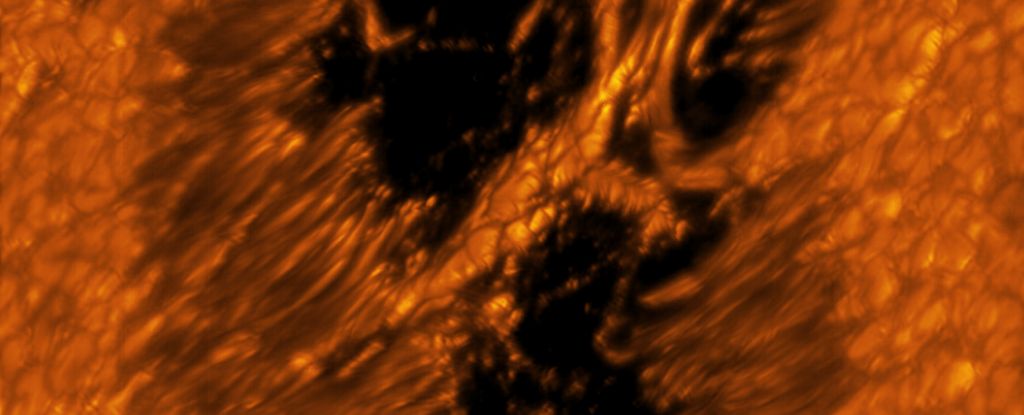

The Daniel K. Inouye Solar Telescope has provided incredible, new images of the Sun, revealing intricate details of the solar atmosphere with a resolution of around 20 kilometers. The telescope has captured images of sunspots, revealing the roiling convective cells, and the motion of plasma. In addition, the telescope’s observations provide a glimpse of the science that can be achieved by analyzing the solar surface in exquisite detail.
Sunspots are typically short-lived blemishes on the sun’s surface where magnetic fields are unusually powerful. They appear darker than the surrounding regions due to their relatively lower temperatures and are associated with the Sun’s more violent outbursts, such as coronal mass ejections and solar flares. Sunspot activity is not constant and tied to cycles of roughly 11 years. During solar maximum, sunspot and flare activity rises to a peak, and it falls to almost nothing during solar minimum. At solar maximum, the Sun’s poles switch places, and we are currently on the path to a solar maximum expected to take place in 2025, after which solar activity will start to subside once again. However, it’s not known what drives these solar cycles or what creates sunspots.
The Inouye images showcase several fine structures associated with sunspots. The umbra, which is the dark spots in the middle, contains bright patches known as umbral dots. The penumbra, which is the region around the umbra, is characterized by bright strands known as penumbral filaments. Occasionally, a sunspot-like region of concentrated magnetic field that has an umbra but no peripheral penumbra can be seen. These are known as solar pores, which form when the conditions aren’t met for the formation of a penumbra. Additionally, as a sunspot starts to decay and disappear, it can be crossed by light bridges. Further decay sees the sunspot lose its penumbra; it’s very rare to capture the process of this loss.
When the Sun is quiet, it can appear quite featureless in images captured in the visible part of the spectrum. However, even a quiet Sun has a lot going on. Convection cells give the solar surface, or photosphere, its “popcorn” texture. Hot plasma rises from within the center of the cell, then travels out to the edges, falling back down as it cools. These convection cells, or granules, are staggeringly huge, up to 1,600 kilometers across. Above the photosphere is the solar atmosphere, or chromosphere. It’s sometimes populated by fine, dark, brushstroke-like threads of plasma known as fibrils or spicules. They look like hairs, but fibril diameters commonly range between 200 and 450 kilometers. They erupt from the photosphere and last for a few minutes. Scientists don’t know how the fibrils are generated, but there are certainly a lot of them, and they’re pretty reliable indicators of the directions of the messy solar magnetic field.
The Inouye Solar Telescope has revolutionized our understanding of the Sun and has provided scientists with an unprecedented view of the Sun’s surface. The new images provide a glimpse of the science to come as researchers analyze the solar surface in exquisite detail. The telescope is expected to help unravel some of the lingering mysteries of these fascinating solar phenomena, which could aid in understanding larger phenomena such as the internal dynamics of the Sun and what drives the solar cycles.
A groundbreaking expedition led by an international research team, featuring esteemed scientists from the University…
The pursuit of coherent control over wave transport and localization stands as a monumental challenge…
In recent astronomical explorations, researchers have unearthed a striking phenomenon emanating from a distant corner…
The quest for sustainable practices within the chemical industry is more critical than ever. Researchers…
In the complex interplay of human health, the relationship between the gut and the brain…
The relentless drive for sustainable energy solutions has fueled remarkable advancements in solar technology, with…
This website uses cookies.